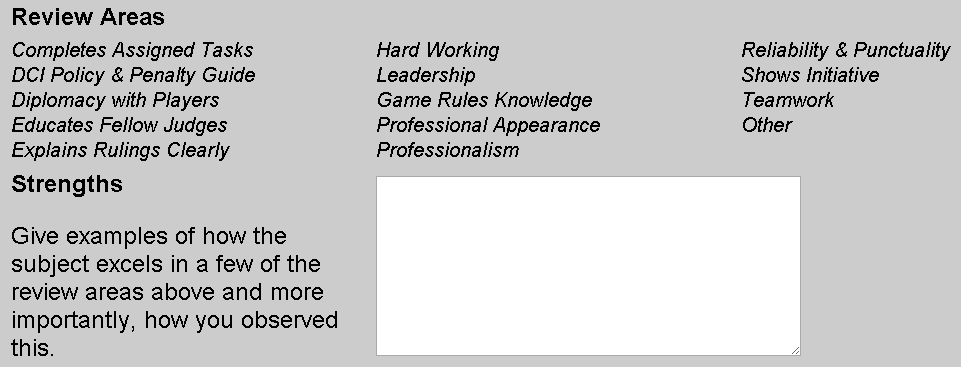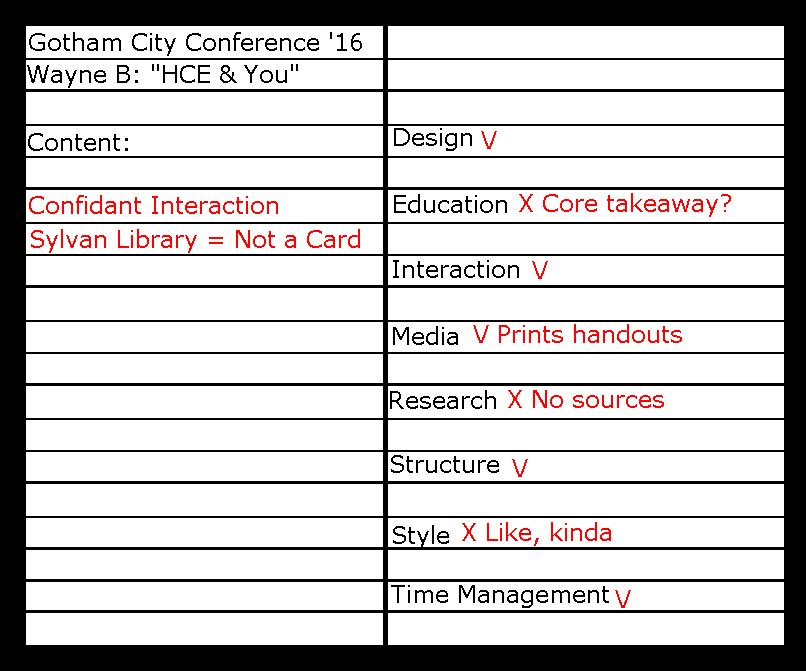From time to time a presenter at a Judge Conference might not be able to engage us as much as they could. It could be the lack of interaction with the audience, the aesthetics of the slides, the length of the talk or many other things.
Why does this happen? In my opinion, it boils down to two situations:
- The presenter is not aware of their mistake, and doesn’t consider it as something to avoid; or
- They are aware of the mistake, but don’t know how to fix it.
What to do then? Prepare for some radical advice: How about telling them? 😀
This article shows you how.
Why Should You Tell ‘Em
People become Judges for many reasons, but I have yet to hear a judge candidate tell me this: “George, please teach me how to become a L1 so I can stand for forty minutes in front of complete strangers who will judge me for something I’ve never received training for.”
Even if one resolves the first mental block, “What would an inexperienced Level Whatever like me have to tell an audience anyway?”, they must still deal with the fact that public speaking is not on everyone’s middle school curriculum, everything they told us about PowerPoint is a lie, and fitting everything we want to say in forty minutes is not easy.
These are not L1, L2 or even L3 exam topics, so the next time someone takes the stage, applaud his courage and will of improvement. That’s step one. Step two, give some constructive feedback during the break. However, do this at your own risk, since this has the same collateral effects as any type of feedback, including thankfulness, motivation, increased speed in improvement and in some extreme cases the start of long-lasting friendships.
How to Do It
My friends know that when I start talking, I would like to talk about everything, but how best to give feedback is beyond the scope of this article.
So for the basics, I’ll just point you to this article by David de la Iglesia, for the intermediates, to this blog by Riki Hayashi
& company, and for help, to this project led by Jeremie Granat
with the help of even more people.
The Why and the How are fundamental, but it’s the What that takes the lion’s share today.
What to Say
I started taking extensive notes for feedback during the French Judge Conference in Dijon in 2014. I realized some issues were common to most presenters, so in Katerini, Greece later that year, I prepared on my notebook a list of things to watch out for in each presenter, pretty much in the same way the Judge Center gives you suggestions for areas to include in your review.

The experiment was successful. Having the list in front of me made just marking a cross or a tick while listening very easy, and gave me enough data for the presenter.
I kept tweaking the list throughout Shanghai, Nanjing, Manila, Bologna and Rome until finally they decided to organize a conference for my birthday in my homeland. It was in Sinaia, Romania that I happened to use this method on two professional feedbackers, Theodoros Millidonis and Mihai Birsan
. With their feedback on my feedback I felt confident enough to make my findings public.
The most effective layout for the list is leaving room for notes about the content on one page, and the checklist on the other. On the left is what you learn from the seminar, on the right is what the presenter can learn from their own seminar, aka the feedback you’ll give them.

You can fill it as you go with your thoughts, or just add ticks and crosses. To help you out here are some things you should watch for, described using the same three-level approach of L3 Qualities:
- you could do it better and I’ll tell you how
- you’re doing well, and
- please teach me how I can do it the way you do it 😀
The Ultimate 8-Point List to Awesome Presentation Feedback
1.Design
Improvable: The slides lack pictures and are mainly walls of text hard to read from the back of the room.
Good: The visuals do not distract and provide card images when necessary.
Exemplary: The presenter uses stunning pictures that support and add further meaning to their words.
How to improve: read this article by Ivan Petkovic.
2. Education
Improvable: The goal of the talk is not clear, and either too boring or too complex for the audience.
Good: The seminar has a specific focus and analyses it thoroughly.
Exemplary: The audience has learned something new, is capable of reproducing it, and is eager for the next opportunity to do so.
How to improve: Marc de Armond has you covered.
3. Interaction
Improvable: The presenter gives a one-hour lecture sitting behind a desk.
Good: The presenter prepares beforehand some questions to ask their audience during their talk.
Exemplary: The audience does a good deal of the talking, with the facilitator skillfully using or provoking cues to advance the discussion.
How to improve: Daniel Sole Garcia here and Thomas Ralph
here share a thing or two on the subject.
4. Media
Improvable: The presenter forgets to print the papers for the quiz.
Good: The handout was short and useful, and the use of the clicker made the talk more fluid.
Exemplary: The presenter made a video to introduce a new deck check technique, then prepared 10 decks with problems for the audience to try it on.
How to improve: I explained in this article how to make all the parts come together.
5. Research
Improvable: Information given is incorrect, outdated or contrary to values of the Judge Program.
Good: The presenter uses a High Level judge article as a starting point to create a workshop.
Exemplary: The presenter blends multiple sources to share state-of-the-art knowledge on the topic and popularize an innovation in Judge Practices.
How to improve: article in the works 🙂
6. Structure
Improvable: The presenter seems to be making up the talk on the go, and goes often back to slides already discussed.
Good: The presenter shares an index at the beginning of the talk and signals progress from one part to the next.
Exemplary: The presenter is a storyteller that takes the audience on a journey.
How to improve: we’ll share some ideas discussed by Nancy Duarte in her book in the upcoming months.
7. Style
Improvable: The presenter talks too fast, or uses too much uh, oh etc.
Good: The presenter is at ease in front of the crowd and uses gestures to stress their points.
Exemplary: The presenter makes everyone laugh or captures their attention seamlessly.
How to improve: Theodoros Millidonis, I choose you!
8. Time Management
Improvable: After spending too much time on the first two parts, the presenter crams the last and most important part in 10 minutes, and still goes overtime.
Good: The presenter keeps an eye on the clock and skips some examples to leave time for questions.
Exemplary: When the audience is very participative the presenter naturally tells a summary of that part, and when nobody intervenes they add relevant anecdotes to make use of the time, relax the atmosphere and encourage interaction.
How to improve: Rehearse the Lammasu out of it. I have some advice on how to do that.
Conclusion
Once the talk is over, your notebook could look something like this:

Don’t worry if you don’t have anything to say on some of the points, and especially during the first conference you try this out, focus on one or two presenters and don’t try to give everyone feedback.
Thank you for reading. If there’s something I didn’t cover, let me know, and if you’re eager for more, read this piece by Lara Hogan, who does this for a living.
I know I feel great when somebody comes to me after a presentation and tells me I rocked it, but the moments I remember the longest are those when people gave me advice on how to rock it even more the next time.
Help more people rock it. Start giving feedback to presenters, today!
Is this an interesting read? Do you also have something to say about slides and seminars? We are always looking for feedback, but even more for collaborators! It doesn’t matter if you want to help writing already scheduled articles, or share entirely new ideas. Contact Theo, and let the Judge Community know what you think.
